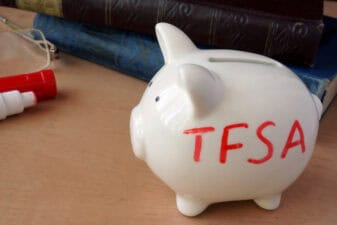Hands down, one of the most popular debt repayment strategies is the debt snowball.
With the debt snowball, you list your debts from smallest to largest balance. You make minimum payments to all debts, but you make extra payments to your debt with the lowest balance. The idea is that, by paying your smallest debts first, you’ll build momentum. The more momentum you gain, the more motivation you’ll have to tackle bigger debts.
It’s a play on human psychology. And while it might work for some, it comes with one obvious problem: your debts with higher balances might also have higher interest rates. In other words, you might spend more money on interest by only making minimum payments to your highest debts.
For example, let’s say you have three debts:
- $1,500 on a personal loan at a 6% interest rate with $200 minimum payment
- $2,000 on a credit card with a 22.99% interest rate with $50 minimum payments
- $2,500 on a second credit card with a 19.99% interest rate with $ 75 minimum payments
Under the debt snowball, you’ll make extra payments to the $1,500 debt first, at the expense of paying less toward your credit cards, both of which have high APRs. Over the long run, the interest charges on your two credit cards are going to compound. You might build momentum, but by paying off your personal loan first, you’ll end up paying more in interest.
What’s better than the debt snowball?
Perhaps a better approach to your debt is the roll-down method.
Popularized by financial guru Suze Orman, the roll-down method involves these steps:
- List your debts from highest to lowest interest rate: Whichever debt has the highest interest rate is the first you’ll pay off, regardless of the balance.
- Make extra payments: After you list your debts, start making extra payments to the one with the highest interest rate.
- Pay the minimum on all your debts: Of course, you shouldn’t ignore your other debts. Keep making the minimum payments to avoid penalties and late fees.
- Roll-over payments: Once you’ve paid off your debt with the highest interest, roll your payments to the next debt.
For example, let’s say you have the three debts listed above, and you want to pay them off with the roll-down method.
The first debt you’ll pay off is the credit card with the 22.99% interest rate. The minimum payment is $50, but let’s say you have enough extra money to pay $250 per month. After 10 months, you’ll pay the full $2,000 (plus $213.75 in interest), and you can focus on your next high-interest debt, the credit card with an APR of 19.99% and a balance of $2,500.
Here’s where the roll-down happens: you’re already paying the minimum on this debt, which is $75 per month. Now you can combine the money you were paying monthly on your first credit card ($250) with the minimum on the second credit card ($75) to pay a whopping $325 per month.
In this way, you eliminate high-interest debts first. Your payments build momentum (the repayments on your second debt will likely be higher than those on your first), and, as long as you stick with your plan, you’ll achieve debt freedom.
Is the roll-down right for you?
The debt snowball has one advantage: by paying off small debts quickly, you get “quick wins,” which help you stay motivated. If that’s what you need to get out of debt, don’t let me hold you back: pay off your debts with the snowball.
But, if instead of psychology, you want a debt repayment that’s purely economical, go with the roll-down method. Since you’re tackling your most expensive debt first, you’ll likely save on interest over the long run.
Now, if you have high-interest credit card debt, there is another option: you can apply for a balance transfer credit card with a low introductory APR. These cards will charge you less interest for a short period of time (usually a few months to a year). If you can pay off your debt within this period, you’ll save a tonne in interest. Combine this with the roll-down method, and voila—you’ll save the utmost money.


